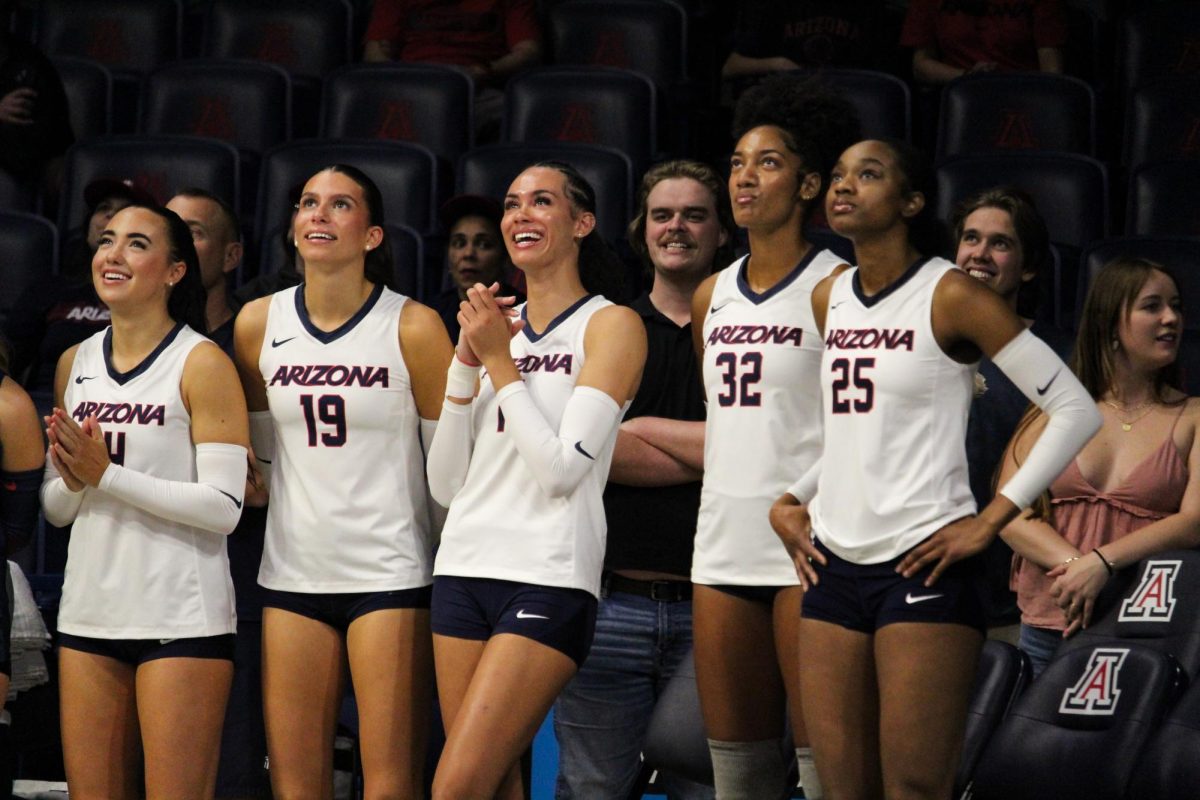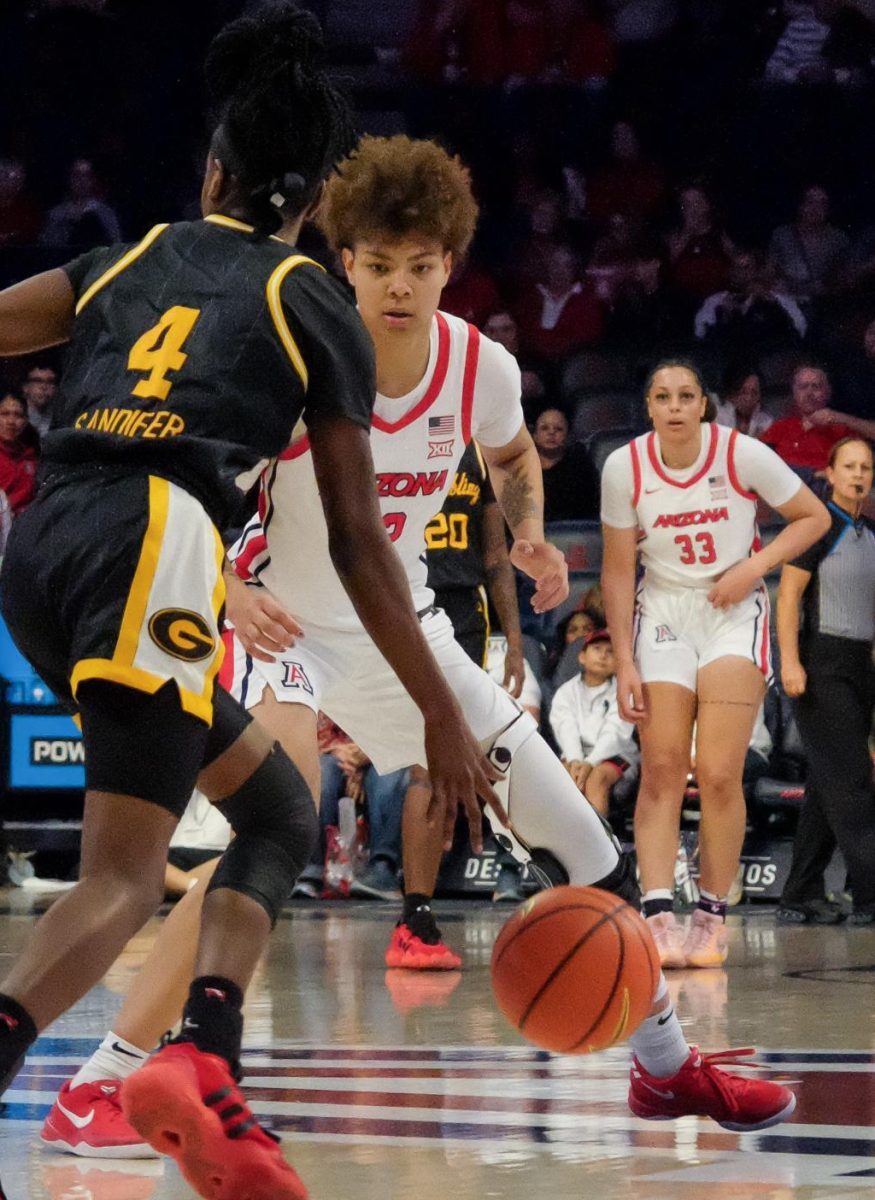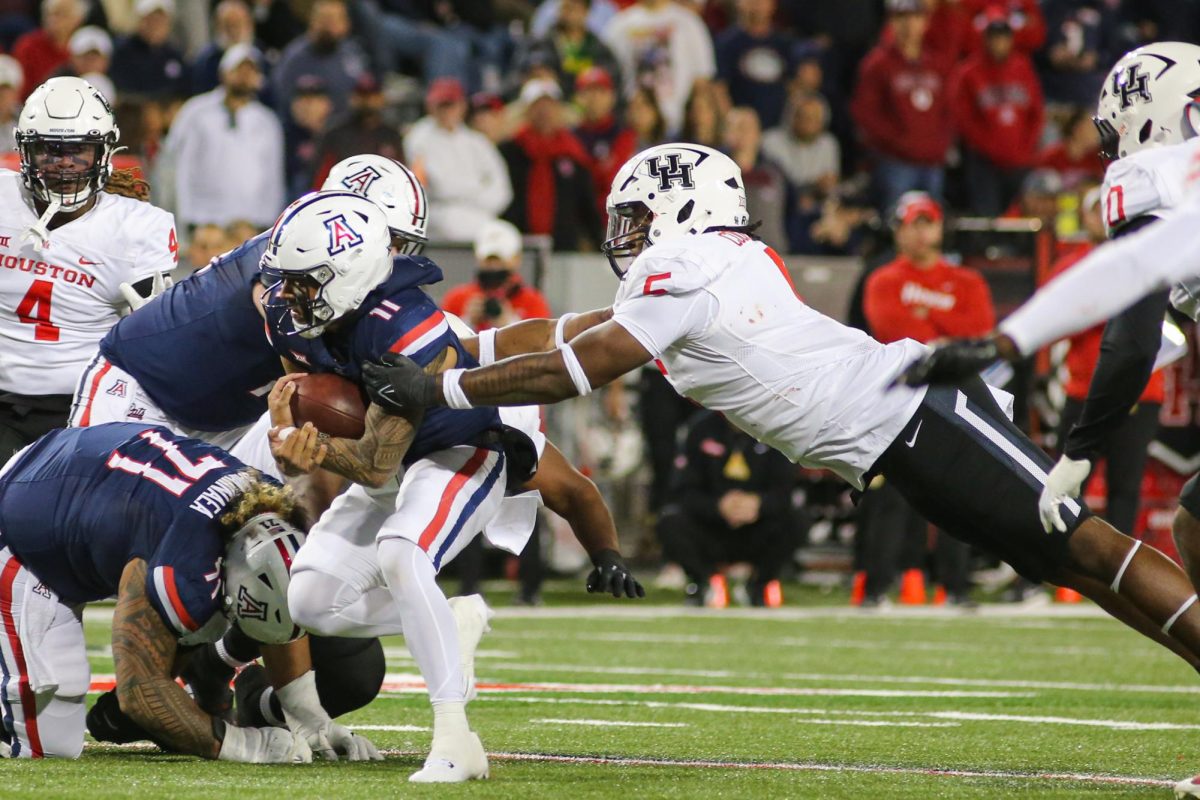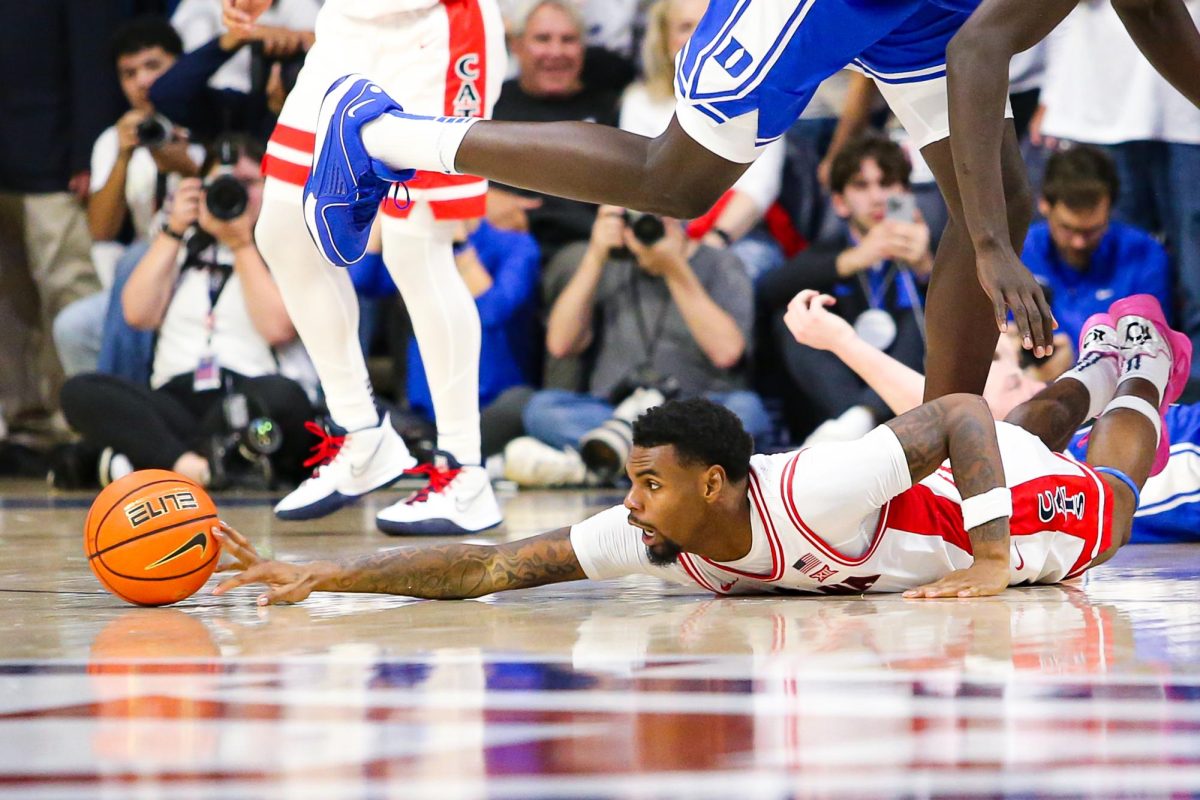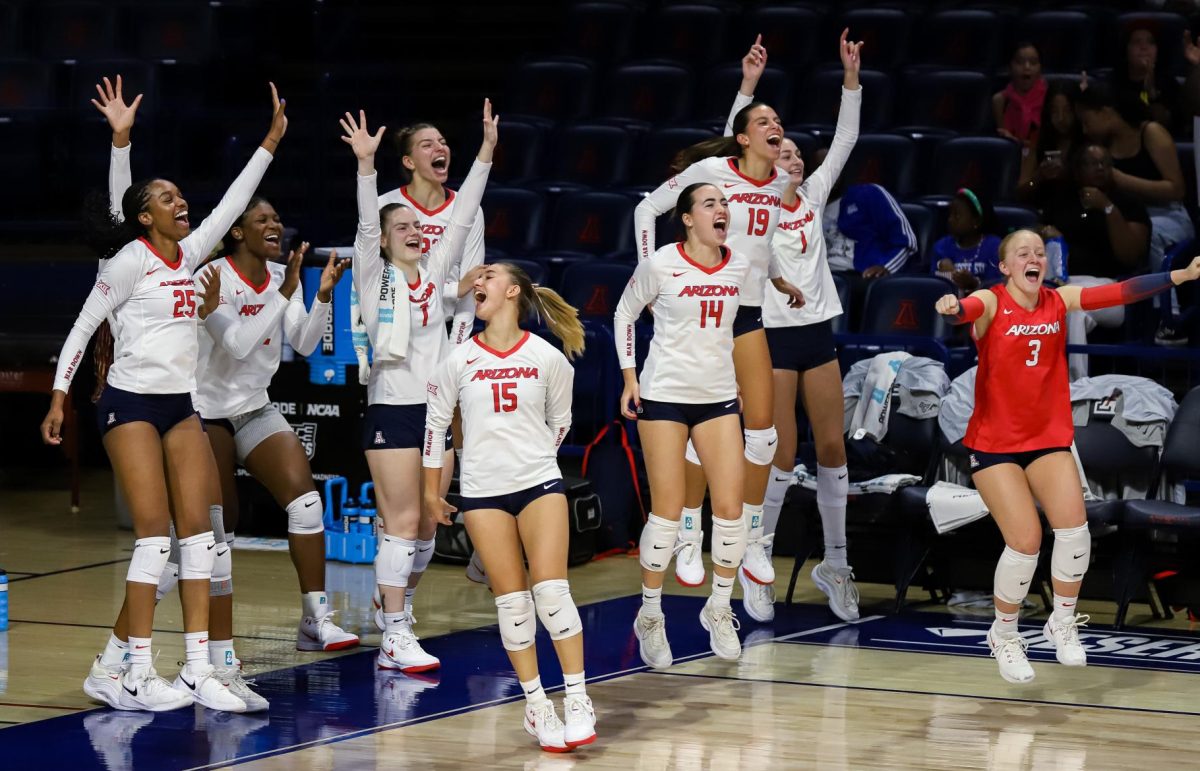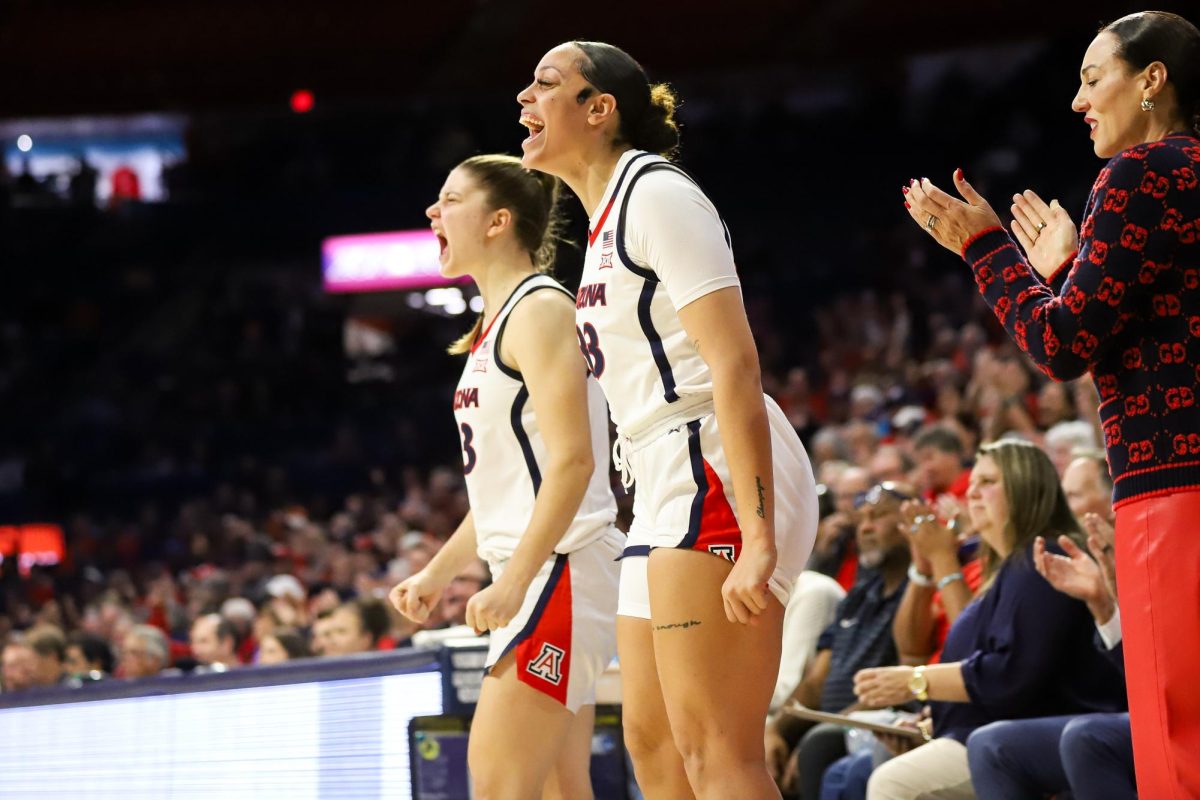The Arizona gymnastics team is filled with battered and weary bodies, but that’s not stopping the Wildcats on thier quest to reach their 24th consecutive postseason berth.
Broken bones, torn muscles, sprains, spasms and bruises are usually terms associated with contact sports, but these injuries are linked to gymnastics as well.
“”It’s a brutal, brutal sport,”” said head coach Bill Ryden. “”It’s like a contact sport with inanimate objects. The injuries mount up over the years, so you get beat on starting at 6 years old.””
If you look at the No. 21 Gymcats (2-5) you can see what Ryden is talking about. Arizona is sprawled around the practice facility, ignoring their bodies’ message to stop their rigorous workout.
“”It’s a lot of joint-specific stuff versus acute muscle, just because of all the compression loading,”” said athletic trainer Doug Contaoi. “”Just the joint stresses on their body.””
“”Overuse injuries, back injuries are huge,”” Ryden added. “”All the joints — shoulder, knees, ankles. You can imagine the pressure that the knees and ankles are constantly feeling.””
As a performance sport that’s all about grace, gymnastics is rarely brought up when discussing physically-demanding sports. While the gymnasts are performing, they are trying to make their routine look easy without stumbling or falling.
“”I think when people watch gymnastics, the only thing that they see is us competing,”” said sophomore Deanna Graham. “”They don’t realize that we are in the gym training four hours, five days a week along with weights. All they see is one routine, and we are done.””
Contaoi said, the sport takes such a toll on their bodies that where in most sports, collegiate athletes are about to peak, college gymnasts are in the latter half of their career. Most of the girls started doing club gymnastics around 6 or 7 years of age, so their bodies have been feeling the pain for years.
Ryden said gymnasts have to work on their craft year round in order to stay competitive. There is no offseason for a gymnast, as she can lose her skills rapidly.
“”I think the only day a gymnast doesn’t feel pain is the first day she started gymnastics,”” said assistant coach John Court
Prevention
The coaching and training staff is constantly trying to find new ways to prevent injuries and make things more comfortable for the athletes working through injury.
Ryden has developed a strength program with strength coach Neil Willey that focuses specifically on gymnastics. The state-of-the-art practice facility has padding everywhere to help with any hard landings, but the most important element for the team is the training staff, with whom the team spends an immense amount of time.
Although the Gymcats use weights, they train differently than any other sport. They target certain muscle groups that don’t get worked out during their routines. Ryden explained that gymnasts are known for having notoriously weak hamstrings that need to be strong in order to keep their knees stable.
“”No other sport does it like us, and we don’t do anything like any other sport,”” Ryden said. “”We would do nothing like what the football players do. We are more low weight and high rep and far more cardio.””
“”I will put our physical fitness against anyone in the country,”” he added. “”We are basically a sport that is about strength-to-weight ratio. You have to be very strong but you don’t want to carry any unnecessary weight, because they have to get up in the air and you can’t do that if you carry extra weight.””
The entire practice facility is dedicated to protecting the team as well.
“”As soon as you walk through that door, every inch of this place is padded,”” Ryden said. “”But you can still feel it. We are trying to do everything we can, so even just tripping in the gym won’t hurt you.””
Throughout the entire practice and all the meets, you can see Contaoi pacing the sidelines and watching for any signs of injury. And after meets, he has the team do recuperative and preventative rehab, including stretching techniques.
“”We all spend a lot of time in the training room; The whole team is always in there,”” Graham said. “”Every single gymnast here is in the training room like an hour a day. It’s kind of a running joke how much time we spend in there.””
Witness
Ryden is in his 12th year at the helm of the Arizona gymnastics program, and he’s seen his share of injuries.
“”On this team we have been pretty fortunate,”” Ryden said. “”Probably the worst one is when Maureen Kealey landed lock-legged on a vault. You can just hear the bone break all the way around the gym.
“”But I have seen worse than that,”” he added. “”I have seen a girl break her neck, I have seen a girl dislocate her ankle and have her foot sticking out the side of her leg. I have seen all of that, but we haven’t had any of that in here, knock on wood.””
Injuries
Rebecca Cardenas: Knee sprain
Aubree Cristello: Heel bruise
Colleen Fisher: Herniated discs
Britnie Jones: Stress fracture
Katie Matusik: Ankle fracture
Ellen Pitluck: Elbow sprain
Miranda Russell: Knee sprain
Mykle Douglas: Groin sprain



